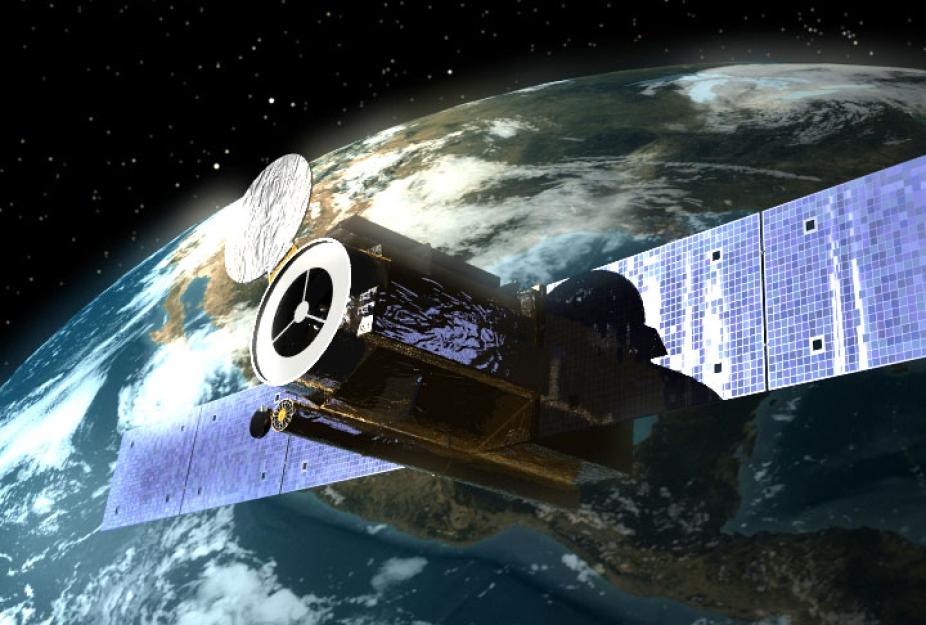Hinode

Artist's rendering of Hinode.
HINODE (Sunrise in Japanese), sometimes referred to by its pre-launch name Solar-B, is an international space observatory that carries advanced instrumentation for solar observations. Developed by the Japan Aerospace Exploration Agency, in collaboration with NASA and PPARC in the UK, HINODE was launched from Uchinoura Space Center (Japan) on Sept 22, 2006 at 21:36 GMT. After the initial post-launch tests and maneuvers, the satellite was placed on a heliosynchronous orbit that allows it to continuously track the solar disk and perform detailed observations.
The overall goal of the HINODE mission is to understand the physical links between magnetic fields near the solar surface (the photosphere) and their energetic and dynamic consequences in the outer solar atmosphere (the corona). More specifically, the primary scientific goals of the mission are:
- Investigating solar magnetic phenomena at very high resolution, including the generation and destruction of magnetic fields and their interaction with the solar plasma,
- Finding the physical mechanism that heats the solar corona to million degree temperatures,
- Understanding the triggers of violent flares and other solar eruptions,
- Investigating the causes of solar luminosity variations along the 11-year solar cycle.
In order to address these ambitious goals, HINODE carries three different telescopes on-board:
- The Solar Optical Telescope (SOT): A 50-cm aperture optical telescope for high-resolution observations of the magnetic field from the surface up to approximately 1000 km above it. This telescope feeds light to a spectro-polarimeter and a pair of imaging instruments.
- The Extreme Ultraviolet Imaging Spectrograph (EIS) for high-resolution observations of the violent atmospheric dynamics and the heating of the upper layers.
- The X-Ray Telescope (XRT) to image the hot solar corona, a bright source of powerful X-rays emanating from regions at temperatures in excess of a million degrees.
HAO has been deeply involved since the early stages of the HINODE project. From its long-standing expertise in development of polarimetric instrumentation, HAO contributed to the development of the focal plane instrumentation of the SOT (with principal responsibility for the spectro-polarimeter), to the calibration of the instruments, and now to the investigation of solar magnetism. With this advanced instrumentation HINODE can perform precise, high-resolution measurements of the vector magnetic field at the solar surface and follow the evolution of magnetic structures as small as 200 km.
FOR MORE INFORMATION VISIT:
Institute of Space and Astronautical Science - JAXA
Hinode (Solar-B) Project Office at NAOJ
Hinode (Solar-B)- NASA